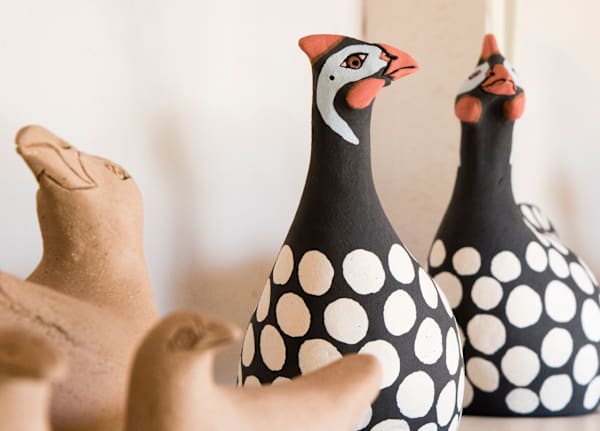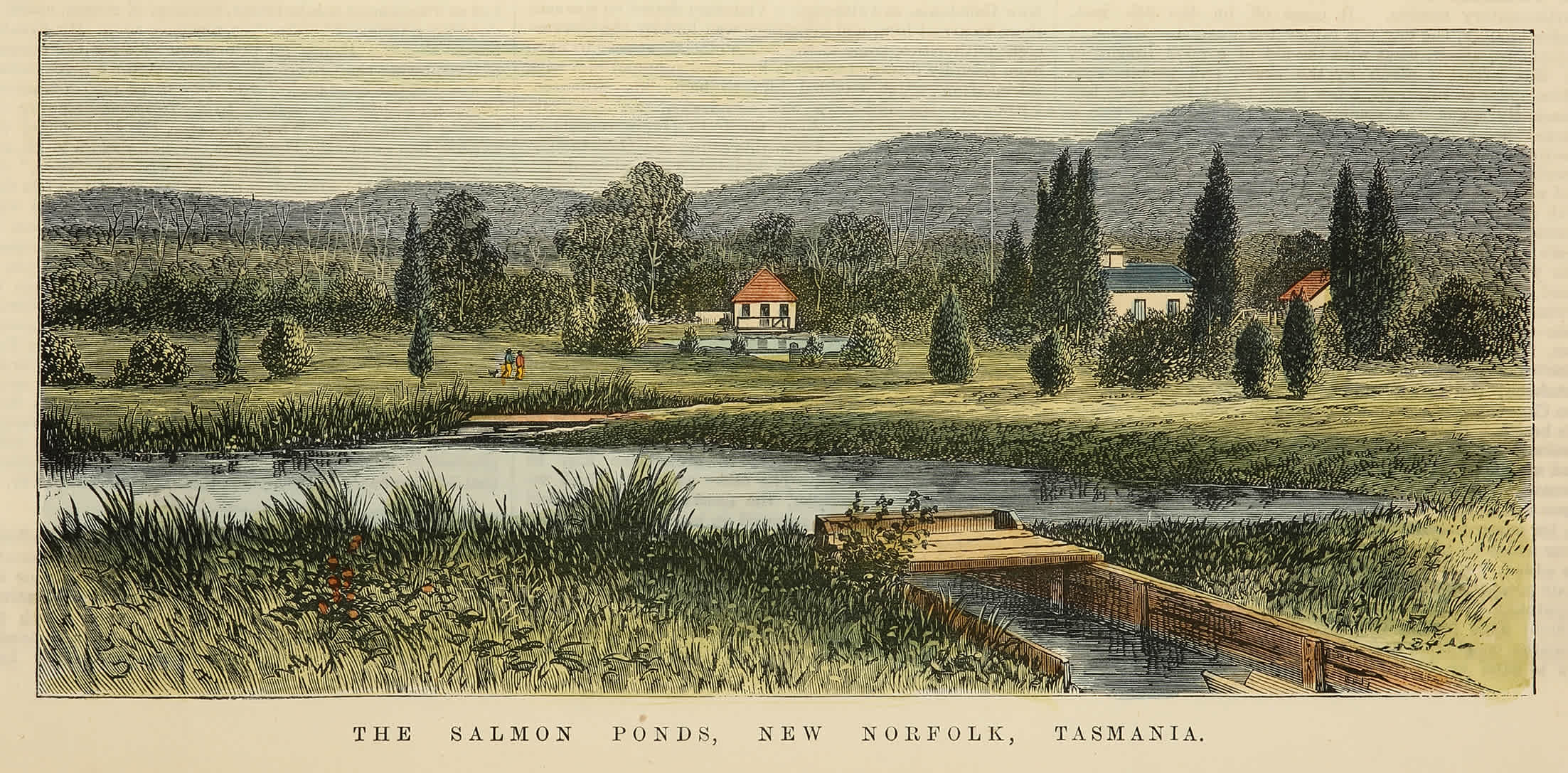“Everything I’ve made comes from place. It’s about home, it’s about belonging, it’s about making connections.” — Eve Howard
Near the small township of Murdunna on the western side of the Forestier Peninsula lies one of Tasmania’s hidden gems, Sommers Bay. On a still day it’s a place of tranquillity, a place to reconnect with nature, and a place of colour – deep blue sky, vivid aqua and blue water, white sand, orange lichen, dark rocks, and the muted greens of eucalypts, banksias and hardy shrubs which line the foreshore. Dotted around the edges of the bay are a few small boat sheds, while brightly coloured kayaks lie overturned above the high-water mark.
Eve Howard, the well-known ceramic sculptor, shares a place at Sommers Bay with her mother, artist Naomi Howard, and her aunty, ceramic sculptor Sally Curry. Considering its beauty, it’s hardly surprising that place is an important part of Eve Howard’s inspiration. “My creativity always intensified when I came home to Tasmania.”
Her family was also important in her progression to a ceramic artist. “They created the space. They are full-time artists/creators, so it was easy to give permission to do just that.”
Eve Howard came to Tasmania with her family when she was 13, but she moved back to the mainland in her 20s. She and Naomi bought the land at Sommers Bay together in 1988, but Eve didn’t start living there full-time until 2005.
For her first foray into creativity, Howard she worked with her mother on silkscreen printing, making T-shirts and tea towels which they sold locally. One day Aunty Sally gave Howard some clay and told her to make something. It was the beginning of a new direction. With her hands on the clay, Howard discovered her love of the relationship between human hands and earth.
“Being in relationship with clay connects me right back through time with the earth, water, fire – the whole,” she said.
Howard’s workshop is a light-filled, rural building that sits behind her house. It’s filled with examples of her work, paintbrushes of varying sizes, pots of paint, work aprons and assortments of wooden ceramic tools and kitchen utensils. Next door, Naomi or Sally might be working in their respective studios. Double wooden doors open to the outside, giving a view of the property. It’s quiet and peaceful – the only sound you might hear is the occasional bird, or perhaps the thump of a wallaby or rustle of an echidna.
“When I started ceramics, birds seemed a natural,” Eve Howard said. “They’ve always captured my imagination. I’ve always noticed them. I enjoy their presence, and living here we have seabirds and the land birds.”
Howard started with birds, then expanded to devils, quolls, wombats and, lately, some characterful seals.


Her love of ceramics sent her to the TAFE about five years ago, when it first moved to the art school at UTAS. She spent two years there, immersed in the study of ceramics. She is influenced (although she points out it’s not a conscious thing – more an infusion) by predominantly native cultures including Australian Aboriginal, Mexican, Inuit, and those of South and western America.
Some artists approach their work with a scientific clarity; it’s important for them that their creation is an accurate representation. Howard prefers to create something that captures a simple essence. “It’s as much about my hands as it is about my brain. It’s interesting working with clay. Unexpected things happen and sometimes it’s really nice to just go with it. You might be heading one way and then you see something else and the clay can take you in another direction.”
The result is that each beautiful, lyrical ceramic piece is a unique creation with its own individual essence.
Howard would like it to be something we want to live with and be in relationship with, something in which she has eminently succeeded.
It’s not only birds and animals that have captured Eve Howard’s desire to transform the clay. She also creates delightful pinch pots, inspired by the local banksias, which are ideal for drinking tea out of.
“Making pinch pots is really good for your mental health! You have a ball of clay, and once you get the basic premise of how to make a pinch pot your hands can just do it. You don’t have to engage your brain fully. You can do it and not be looking at the pot."

“It makes me feel part of something bigger and deeper, the simplicity and the beauty that’s been created by human hands throughout human history. You can still just get a little ball and essence." Howard would like it to be something we want to live with and be in relationship with, something in which she has eminently succeeded.
The Dunalley fire in the summer of 2013 had a devastating impact on the people of the Tasman Peninsula. Eve Howard was away at the time. She had gone to the mainland to look after a friend who was having a brain tumour removed, and was then heading to Sydney to look after her nephew. She is very conscious of the fact that although their land was burnt they didn’t lose their houses, unlike a lot of her friends and neighbours, for whom it was an incredibly harrowing time on so many levels.
Many artists lost their studios in the fire as well, as all their tools, and many must have wondered if they would ever make anything again.
Justis Barrymore is a former Murdunna resident. After the fire he felt a strong desire to give back to a community he had lived in, that had supported him. Howard worked with Barrymore to put together an exhibition, Epicormia, in the Long Gallery in Salamanca Place in March 2014, by 42 bushfire-affected artists from Dodges Ferry to Nubeena. The success of the exhibition is summed up by Eve Howard, “Epicormia culminated in the first real community celebration since the fires. The opening was the first time I saw smiles on people’s faces and it was a turning point of healing for me personally – one chapter closed and there was a feeling of permission to start fresh from that point.”
The importance of connection is reflected in Howard’s enjoyment of running workshops, but also in creating something that can then be juxtaposed with other artists’ work. Her next exhibition, Undercurrent-the wild edge, is about the interface between the ocean and the land. This is a joint exhibition with another Tasman Peninsula artist, Pamela Jones (mixed media/collage), a fitting way to exhibit for an artist to whom connection, place and nature are so essential to her work.











